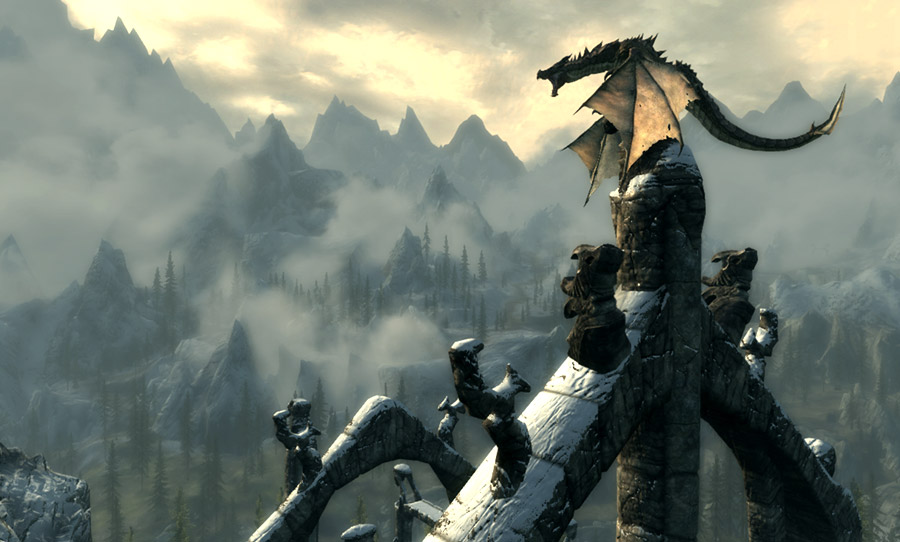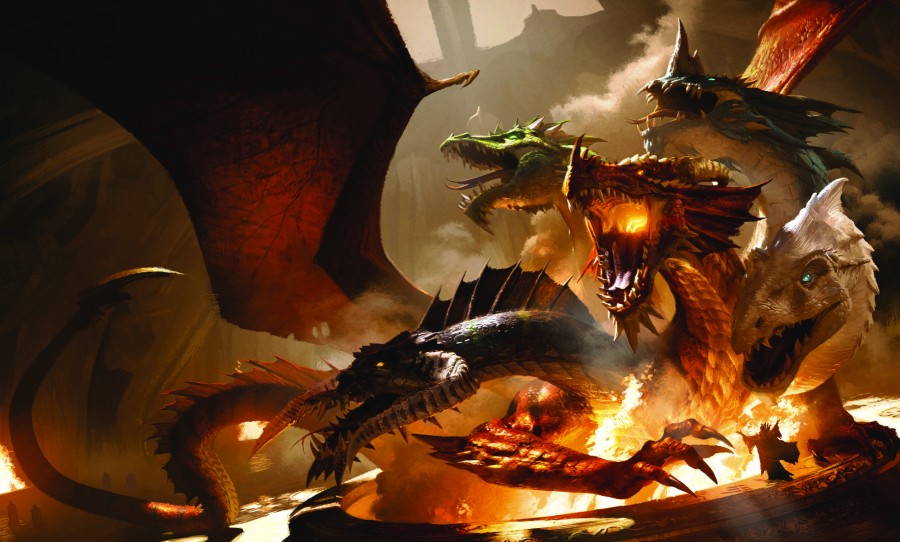The recent PAX exhibition saw the gathering of gamers far and wide, checking out the latest from the AAA world, as well as the best new titles from local, independent developers.
One of the standouts of this year’s PAX Rising was Broken Roads from the development team, Drop Bear Bytes. Set in a hellish, post-apocalyptic Western Australian landscape, Broken Roads is a classic RPG which combines elements of survival, teamwork and morally based decisions that can make the difference between life and death.
Drop Bear Bytes Founder and Game Director, Craig Ritchie and Audio Lead, Tim Sunderland took five to explain the inspirations behind visual and sonic worlds of Broken Roads, the roles that are required to make a game like this a reality and building unique instruments from scratch to create a sound world like no other.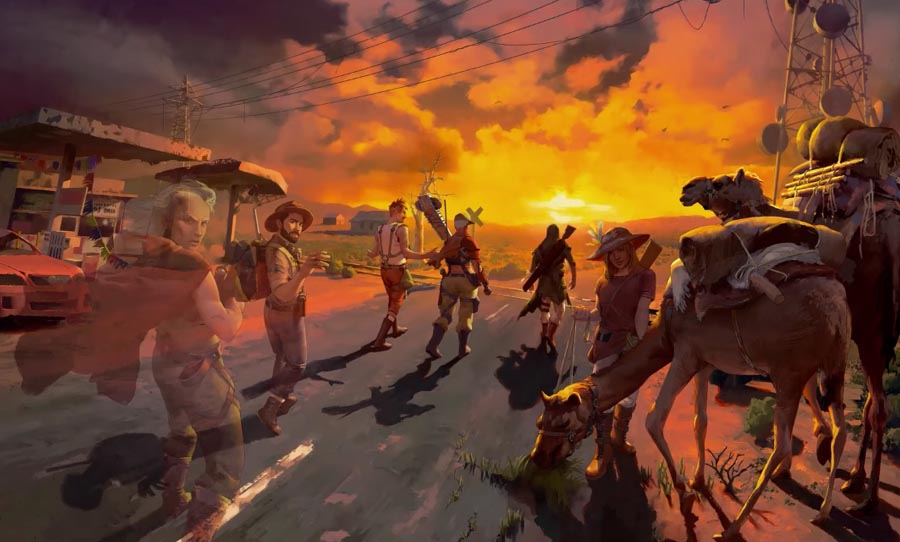
Craig Ritchie and Tim Sunderland from Broken Roads took five to talk about the inspiration behind this post-apocalyptic adventure and the creation of a unique sonic landscape.
ENMORE AUDIO: What sparked your interest in developing games?
CRAIG: The desire to make games is something that started when I was very young – I don’t recall exactly what year, but I do remember making my first game in BASIC on the Acorn Electron at some point in the mid 1980s.
These were simple text adventures – “GO WEST, GET LAMP”… that sort of thing – I was about 5 or 6 years old. I was around 10 or so when I first played King’s Quest and then saw a whole new way of combining graphics, puzzles and storytelling and was absolutely blown away.
The next big leap came when playing Ultima 6 and later 7. It was my first experience of playing the isometric role-playing games I’d seen a few times in magazines, but never got my hands on until I was about 12 or 13. That changed everything. It’s been my favourite genre since the early ’90s, and the kind of games I’ve enjoyed the most.
I also designed an Elite/Privateer-style freeform space trading/combat game when I was in high school, and maybe I’ll get back to something like that at some point, but games like Ultima, Fallout and Baldur’s Gate have always been top for me.
ENMORE AUDIO: Can you tell us what inspired the concept for Broken Roads?
CRAIG: The idea came in the first week of January this year. I was looking at doing a post-apocalyptic game in a generic, catch-all setting so that I could put my own spin on things. But very early in conceptualising and pre-production, I changed to the idea of making the game cover the breadth of Australia, given how perfect it is for exploration. There’s a wide range of varied landscapes and biomes within one country and I also felt there was so much potential to set games in Australia.
It didn’t take me long, however, to reduce the scope from all of Australia to just a portion of Western Australia. I briefly considered a few styles of RPG (Heroes of Might and Magic-like, Banner Saga-like, and a few others) before settling on making a traditional, old school RPG like those I know and love.
I also felt that philosophy had so much potential to be explored in games but was still largely under-served, not just in terms of story and scenario design, but also in terms of gameplay mechanics, and that’s where the concept for the Moral Compass came from. I’m very stoked with the reactions to it, and I’m excited to get designing and testing scenarios that really put it through its paces.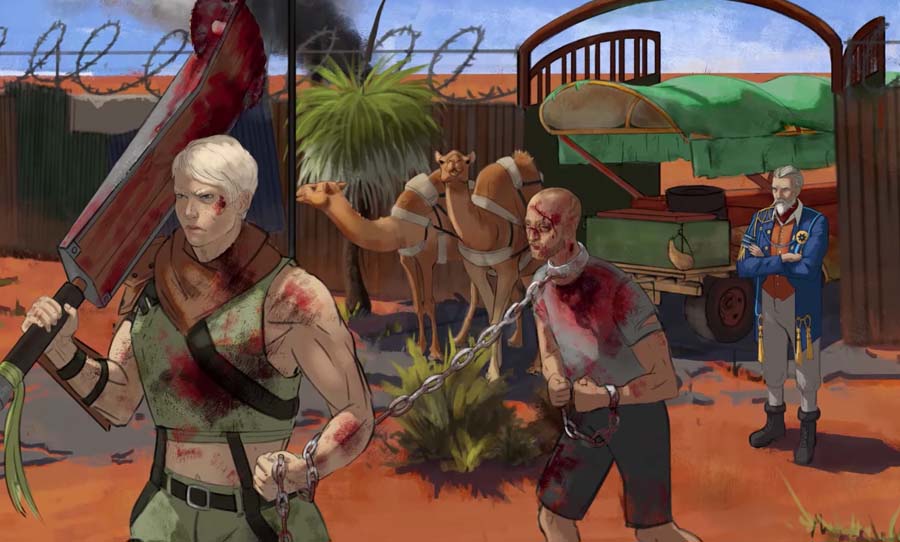
ENMORE AUDIO: Who’s in the development team and what are their roles?
CRAIG: There are six core team members and we engage with around 15 freelancers as and when needed. The basic rundown would be: Jacques Leemans, our Development Director, is responsible for all the programming and systems development in the game. He’s a huge fan of Baldur’s Gate, a former lecturer in game design, has over 15 years’ experience and is a great fit for the team and the project.
Kerstin Evans is our very talented Art Director. I had a particular visual target for the game of ‘playing in concept art’ and when I saw her art style at the start of the year, I knew I’d found an artist who could create just that. She works on ensuring we have that big brushstroke, painterly style throughout.
Samantha Webb is our Narrative Lead, responsible for overall plotline, character and scenario development, and mentoring writers on the team who may have all the talent and passion we need but not have as much experience in writing for games. She has a Masters in Game Design and has worked with some AAA studios (including Riot and Ubisoft) and brings great experience to the writing team.
Jethro Naude is my co-founder and CFO for Drop Bear Bytes, and also works as Game Economist. This means he’s the one balancing everything in the game with complex spreadsheet wizardry, coming up with models for the numerical side of the game design, the in-game markets/prices, balancing the use of skills and abilities in the game to ensure that every build possible is actually viable and most importantly fun.
Tim Sunderland is our composer and Audio Lead. He’s a great addition to the team in terms of his pure talent and drive, as well as being an excellent stand in Community Manager. It’s not his core role but he has taken to it really well.
Tyson Hollitt is our Digital Designer, heading up all the UX and UI design in the game. He’s from Firemonkeys and Torus before that, is creating scaleable UI from the get-go with a view to supporting our multiplatform release from the outset. He has extensive experience not just in design but also working in Unity, which really helps streamline things for the team.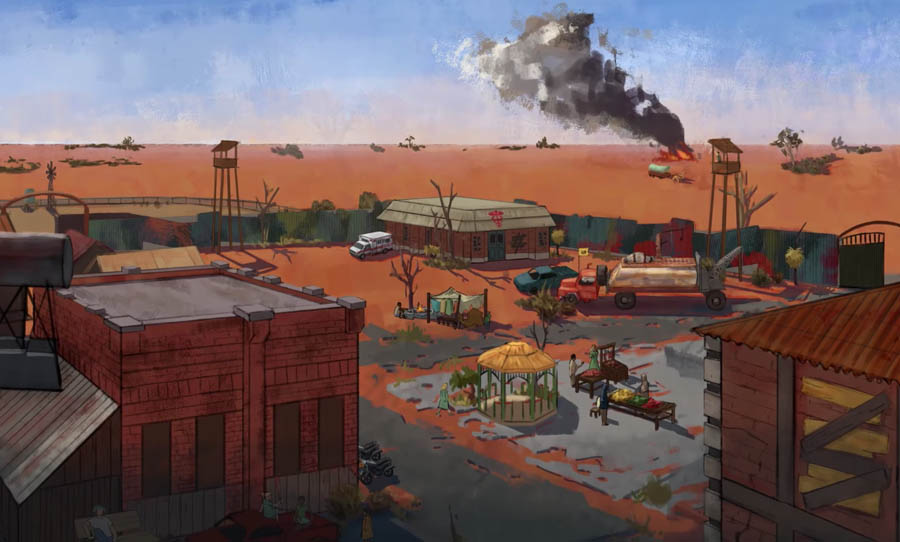
We also have Ryan Gee, a very talented VFX artist based in Canada who I came across purely by chance scrolling through Twitter one day. He’s now been on the team for more than 6 months. It just goes to show you need to get your portfolio and samples of your work out there, people!
We’ve also got an extremely talented up and coming artist, Cassandra Lee, on board in the role of Junior Concept Artist. Based in South Africa, Cassy’s been doing a wide range of concept art and illustration tasks ranging from concepts and 3D modelling the weapons you see in the game, drawing the world map, sketching out icons and inventory items, and a few concepts we’ve not shown publicly yet but will be getting to in alpha development very soon.
ENMORE AUDIO: What are some of the challenges in coordinating this team and working on the game?
CRAIG: I think the biggest challenge comes in the form of balancing scope with budget. We’re a small team working on an ambitious title that is trying some new things. We’re distributed around the world, in a range of time zones, and cover the full spectrum of games industry experience levels from ‘literally never worked on a game before’ to those who have contributed to, or even shipped huge titles.
There’s always a need for more time, more money, or more people, so just having to wear a lot of hats and have people jump on tasks that are not really part of their core role helps a lot. We have plenty of good tools online to help us collaborate across the world and we’re doing our best with the resources we have.
The major cost in making games comes down to the talent – the humans making the thing – and ensuring you’re providing the best possible environment for them to do their best work, to work well together even if not in the same studio space, that they are all kept aware of what other departments are doing and aligned towards a common vision for Broken Roads.
These are all challenges we face, and I think every game studio faces, so we just have to never lose sight of the fact that it all comes down to ensuring the people developing the game have everything they need to not just do their best work, but have a great time doing it as well.
ENMORE AUDIO: How did you find your way into the game audio industry? Has it been a life long interest for you?
TIM: I’ve been a musician for 22 years and a producer for 7. I was in a job that just wasn’t making me happy anymore, so I took the leap and started searching for a way to make a living out of my love for music.
As a kid I would get lost in the soundtracks of games, the atmosphere and emotion they evoked were very powerful to me – they still are. I’ve always wanted a chance to do that to someone else, so I put a post on Reddit in Game Dev Classifieds, Craig found it, we got to talking and here I am.
ENMORE AUDIO: What inspired the sonic environment for Broken Roads?
TIM: Emotion, atmosphere and story telling goes without saying, but to be more specific, I’d say that I want the music to feel like another character in the game, an invisible friend or foe that either holds your hand to tell you it’s going to be OK, or slaps you across the face to remind you of the world you live in.
The very first piece I wrote was Remember Us, which is in the trailer. I pictured the piano as the player taking footsteps through their journey with ups and downs along the way, but always moving forward and developing into something a bit more hopeful. Piano and strings in a cinematic way are great for setting the tone for the player… but don’t expect it to feel so clean and safe throughout.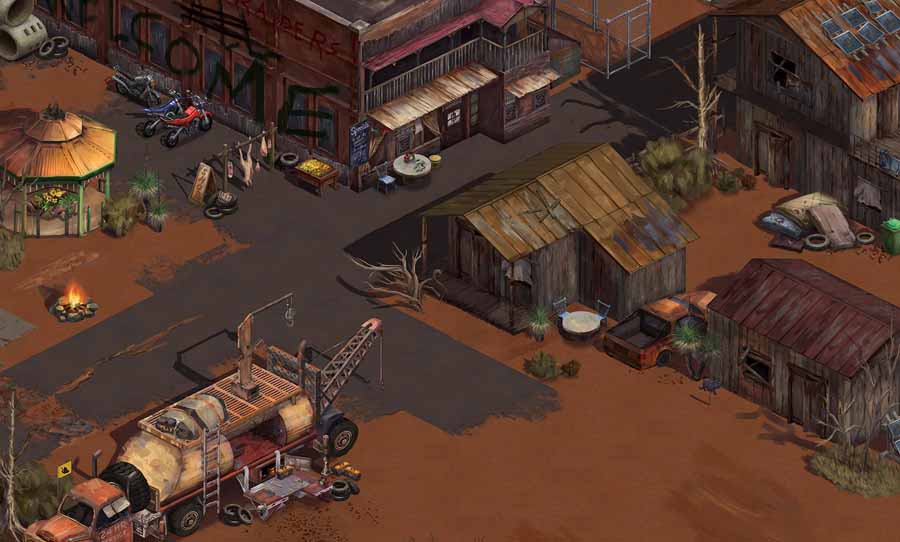
ENMORE AUDIO: How do you create the sounds that are particular to this environment?
TIM: First I thought “What would a post apocalyptic Australia sound like?” in terms of melody etc. and that progressed to “What instruments would a musician of such a world actually have to use?” So in addition to piano, guitar, bass and percussion, I’ve started to build makeshift instruments out of materials that could be available to our Broken Roads musicians. Bamboo flute, wooden wine box with some strings and a pickup, various percussive and tonal knick knacks, basically anything that can make a cool sound that I can build with minimal tools.
I’m also doing a lot of sampling and creating synths out of everyday sounds – it’s amazing what a crow caw turned into and instrument with layered effects can do! I had the chance to record some didgeridoo tracks with a local Elder years ago – I myself play – so I’m incorporating that as well. If you asked me what Australia sounds like the first thing that comes to mind is didgeridoo, it’s probably one of the most atmospheric instruments ever made, especially with some reverb and delay.
ENMORE AUDIO: How would you describe your workflow? What gear is essential to your process?
TIM: My workflow is chaotic, there’s usually no rhyme or reason to it. If I force it, you can hear that so I tend to spend a lot of time just playing for myself until I have that aha! moment, usually really late at night.
I can’t live without my DAW Ableton Live, Maton EM225C acoustic guitar, Roland keyboard and Zoom H4 field recorder. In terms of microphones, I keep it simple and limit myself to the EV RE320 Dynamic – I’ve found it to be the perfect all-round mic.
ENMORE AUDIO: How do you see the division between sound design and music? Are they separate or do they inform each other?
TIM: The cohesion of the two are very important in my opinion. Juxtaposition is one of my favourite things in any medium but when you have a soundtrack that’s like wind through trees, and sound design that’s like hammer on steel it really creates a compelling sonic moment in time.
Unless you’re really going for a specific artistic vision, all rules go out the window to serve the narrative. So far I’ve found the UI sound design aspect to be the trickiest, but the challenge is all part of the fun! The actual SFX themselves aren’t too difficult to produce and I’m a big fan of not hearing the exact same sample over and over again. Therefore I do a lot of takes – it helps to keep it sounding fresh. 
ENMORE AUDIO: How do you collaborate with other members of the team to develop audio for a game?
TIM: Apart from running everything I write through Craig and throwing up ideas here and there on our team message boards, I actually don’t reach out that often to other team members. In terms of audio implementation, I’ll be working closely with our programmer Jacques and that will most likely change aspects of the way I write the music and design the sounds. But without the amazing artwork and narrative our team produce I’d be drifting aimlessly, so they’re helping me a lot more than they realise.
ENMORE AUDIO: What are your goals for your future in game audio?
TIM: Honestly, I just want to keep developing as a composer, working with awesome people on amazing projects and establish my own style in the game audio world. But most of all I want to have an everlasting impact on someone, anyone, the same way it’s had on me, and if I can continue to make a living out of what I love doing while inspiring others, then I’ll feel like I’ve accomplished something in my life.
Broken Roads is slated for release in 2021. To stay up to date with the development of the game, head over to Drop Bear Bytes.

